|
|
The Abbey of Mercoire |
|
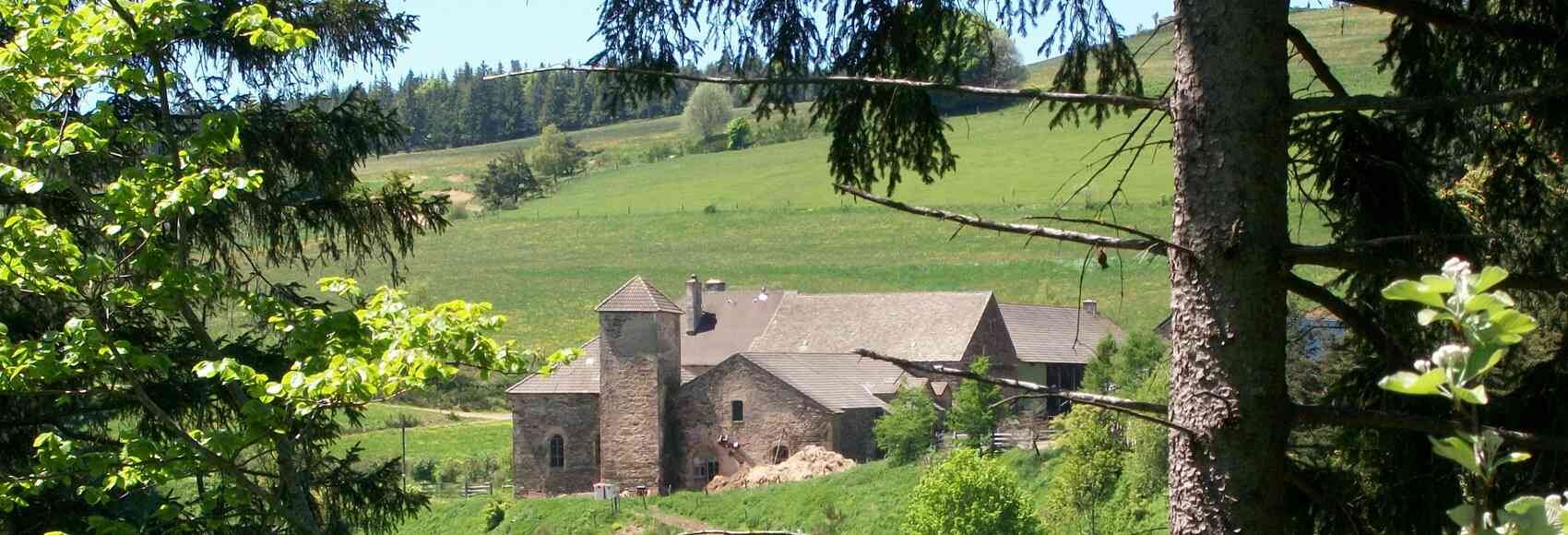
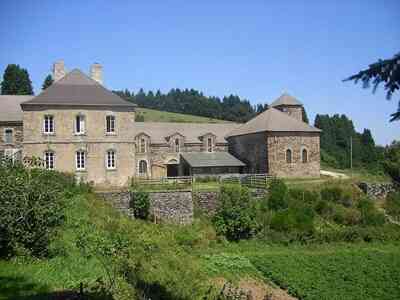 While the exact date of the foundation of this monastery is not known, a text tells us that it already existed in 1207. The Abbey of Mercoire owned one-sixth of the 10,000 hectares of the Mercoire forest, land that was given to it in the 12th century by Guillaume de Randon. To meet its needs, it was also the owner of estates in Vivarais, Velay, and Gévaudan, from which it received wheat, rye, chickens, butter, cheese, wine, oil, chestnuts...
While the exact date of the foundation of this monastery is not known, a text tells us that it already existed in 1207. The Abbey of Mercoire owned one-sixth of the 10,000 hectares of the Mercoire forest, land that was given to it in the 12th century by Guillaume de Randon. To meet its needs, it was also the owner of estates in Vivarais, Velay, and Gévaudan, from which it received wheat, rye, chickens, butter, cheese, wine, oil, chestnuts...
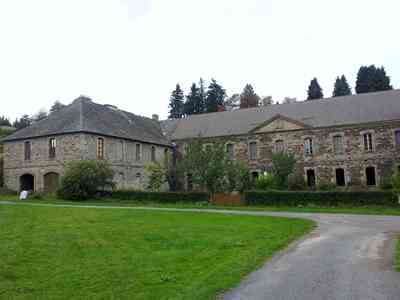 By the end of the 13th century, the convent had 50 nuns and 15 "damoiselles," novices or daughters of the nobility raised here. They would number only about fifteen by the 15th century and 7 by the Revolution. Indeed, isolation could not protect the abbey from various destructions, starting with the attack by the Huguenots of Merle in 1578. In 1773, a fire destroyed the entire monastery, except for the church and the chapel. Significant donations then allowed for the construction of new buildings, but twenty years later, the abbey and its domain were sold as national property and converted into a farm around 1875.
By the end of the 13th century, the convent had 50 nuns and 15 "damoiselles," novices or daughters of the nobility raised here. They would number only about fifteen by the 15th century and 7 by the Revolution. Indeed, isolation could not protect the abbey from various destructions, starting with the attack by the Huguenots of Merle in 1578. In 1773, a fire destroyed the entire monastery, except for the church and the chapel. Significant donations then allowed for the construction of new buildings, but twenty years later, the abbey and its domain were sold as national property and converted into a farm around 1875.
Some documents about a royal abbey in Gévaudan, in the diocese of Mende, allow us to follow for a brief moment a six-century-old story. The Abbey of Mercoire, founded in 1207 in the heart of the Cévennes, in a completely different context than that of Saint-Antoine, had a very prosperous beginning and counted up to 50 nuns in the 13th century. However, by the end of the 15th century, wars, fires, looting, but also the harshness of the place, reduced the community to about fifteen members. There were periods of discouragement, followed by recoveries. At the beginning of the Revolution, there were only seven nuns left, two of whom were absent.
On August 11, 1790, the commissioners of the district of Langogne came to inventory the movable property and titles of the monastery. The various sources of income totaled 9,781 livres, 4 sous. There was no mention of expenses. Once the inventory was complete, the nuns were questioned and asked to declare "whether they intended to live in their house with the vows they had taken or if they wanted to take advantage of the freedom that the law offered them." The recorded responses were unanimous. Mrs. de Treilles, the abbess, and the four other nuns present declared, "they wish to live and die in the community if it can continue under the vows they have taken for this purpose." Two sisters, Françoise and Rosalie du Fayet de Chabannes, were among those present.
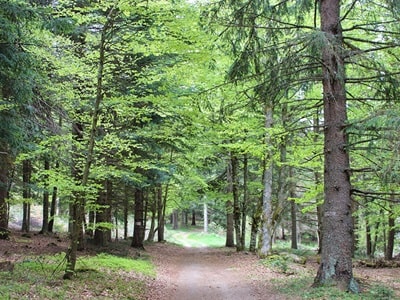 On November 11, 1790, one of the absentees, Marie-Anne de Vergèses du Mazel, aged thirty, wrote to the district of Langogne and declared her intention to live and die in the state she had embraced. "I always consider myself, she said, as a member of the house of Mercoire. I left the abbey on November 19, 1789, only with the permission of my superiors." The other absentee, Anne de La Tour de Clamouse, stated that she left Mercoire "with permission from the superiors and at the express order of the doctor... to take the necessary remedies for her health" (January 25, 1791).
On November 11, 1790, one of the absentees, Marie-Anne de Vergèses du Mazel, aged thirty, wrote to the district of Langogne and declared her intention to live and die in the state she had embraced. "I always consider myself, she said, as a member of the house of Mercoire. I left the abbey on November 19, 1789, only with the permission of my superiors." The other absentee, Anne de La Tour de Clamouse, stated that she left Mercoire "with permission from the superiors and at the express order of the doctor... to take the necessary remedies for her health" (January 25, 1791).
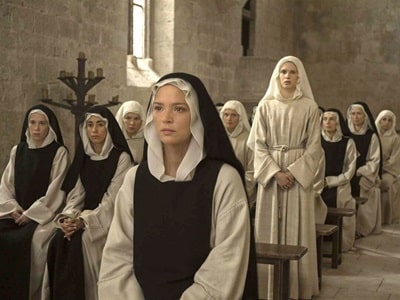 The directory of the district of Langogne is in no hurry to provide the pension planned for the nuns of Mercoire. They, no longer receiving their income, live in a poverty bordering on misery, without complaint. However, public rumor warned the departmental administration of their distress. On July 14, 1791, the magistrates deliberated and granted a provision of 1,800 livres, and on August 6, they set the pension of the abbess at 1,500 livres and that of the nuns at 700 livres, payable every three months by the district treasurer.
The directory of the district of Langogne is in no hurry to provide the pension planned for the nuns of Mercoire. They, no longer receiving their income, live in a poverty bordering on misery, without complaint. However, public rumor warned the departmental administration of their distress. On July 14, 1791, the magistrates deliberated and granted a provision of 1,800 livres, and on August 6, they set the pension of the abbess at 1,500 livres and that of the nuns at 700 livres, payable every three months by the district treasurer.
The nuns were still all at Mercoire on July 15, 1792, during a search conducted due to the denunciation of a "patriot" from Langogne, who identified the place as a den of dangerous suspects. However, the investigator found only "the ladies and the servants," no weapons. Therefore, he left the house at their disposal. Not for long: on December 29, 1792, the nuns were no longer there, in accordance with the law of August 18 of the previous year.
***
 In the 12th century, the Abbey of Mercoire was a place of peace and devotion, where nuns and damoiselles lived, who were either novices or daughters of the nobility sent to the abbey for education or to await marriage. The abbey was founded by Guillaume de Randon, a lord of Gévaudan, who offered a part of the forest of Mercoire to the nuns. He was also the protector of the troubadours, these poets and musicians who sang of courtly love.
In the 12th century, the Abbey of Mercoire was a place of peace and devotion, where nuns and damoiselles lived, who were either novices or daughters of the nobility sent to the abbey for education or to await marriage. The abbey was founded by Guillaume de Randon, a lord of Gévaudan, who offered a part of the forest of Mercoire to the nuns. He was also the protector of the troubadours, these poets and musicians who sang of courtly love.
Among the damoiselles of the abbey was Héloïse, the daughter of the Count of Rodez, who was promised to the Baron of Sévérac. Héloïse was beautiful and intelligent, but she did not love the baron, whom she found old and ugly. She dreamed of another fate, more free and romantic. She loved listening to the songs of the troubadours, who sometimes came to the abbey to entertain the nuns and the damoiselles.
One day, a young troubadour named Bérenger arrived at the abbey. He was blond and handsome, and he had a melodious voice. He sang verses in honor of his lady, whom he called his "thornless rose." Héloïse was enchanted by his songs, and she wondered who this beloved lady was. She began to observe Bérenger and noticed that he often looked at her tenderly. She then realized that she was his thornless rose, and she was moved.
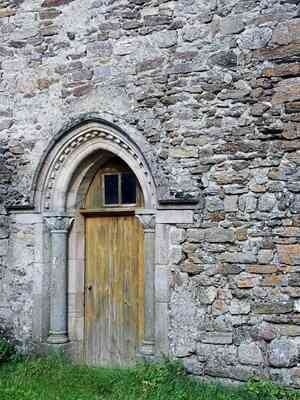 She started talking to him, and they discovered affinities. They shared the same love for poetry, music, and nature. They walked together in the forest of Mercoire, where they admired the trees, the flowers, and the animals. They shared their dreams, their hopes, and their fears. They confided their secrets, joys, and sorrows to each other. They smiled at each other, touched each other, and kissed. They loved each other.
She started talking to him, and they discovered affinities. They shared the same love for poetry, music, and nature. They walked together in the forest of Mercoire, where they admired the trees, the flowers, and the animals. They shared their dreams, their hopes, and their fears. They confided their secrets, joys, and sorrows to each other. They smiled at each other, touched each other, and kissed. They loved each other.
But their love was forbidden, as Héloïse was engaged to the Baron of Sévérac, and Bérenger was just a simple troubadour, without wealth or rank. They knew they could never marry or live together. They knew they would have to part, sooner or later. They knew they risked the wrath of their families and the disapproval of the Church. But they did not want to give up their happiness, and they decided to seize every moment.
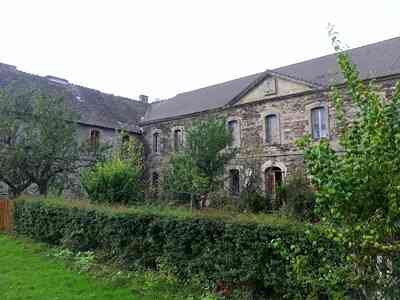 They secretly met at night in the chapel of the abbey, where they hid beneath the altar. They swore oaths to each other and prayed to God to protect them. They exchanged gifts and engraved their names on the walls. They made love and forgot the world.
They secretly met at night in the chapel of the abbey, where they hid beneath the altar. They swore oaths to each other and prayed to God to protect them. They exchanged gifts and engraved their names on the walls. They made love and forgot the world.
But their secret was discovered by a jealous nun who caught them one evening in the chapel. She denounced them to the abbess, who was shocked. She called the Count of Rodez, Héloïse's father, and the Baron of Sévérac, her fiancé. She told them everything and showed them the evidence of Héloïse and Bérenger's wrongdoing.
The Count of Rodez and the Baron of Sévérac were furious, and they swore to take revenge. They had Bérenger arrested and condemned him to death. They had Héloïse imprisoned and forced her to marry the baron. They burned Bérenger's songs and erased their names from the walls. They did everything to erase their love.
But they could not succeed. For Héloïse and Bérenger loved each other more than anything, and they never renounced their love. Before he died, Bérenger sang one last time to his thornless rose and said goodbye to her. Before getting married, Héloïse wrote one last time to her troubadour, telling him that she loved him. They kept their memories and hoped to be reunited in paradise.
The Abbey of Mercoire was sad and dark after this drama. The nuns and damoiselles wept for Héloïse and Bérenger and regretted their love. They prayed for them and paid them tribute. They made a cross over Bérenger's grave and laid roses there. They composed a song about the story of Héloïse and Bérenger and sang it every spring.
Former holiday hotel with a garden along the Allier, L'Etoile Guest House is located in La Bastide-Puylaurent between Lozere, Ardeche, and the Cevennes in the mountains of Southern France. At the crossroads of GR®7, GR®70 Stevenson Path, GR®72, GR®700 Regordane Way, GR®470 Allier River springs and gorges, GRP® Cevenol, Ardechoise Mountains, Margeride. Numerous loop trails for hiking and one-day biking excursions. Ideal for a relaxing and hiking getaway.
Copyright©etoile.fr